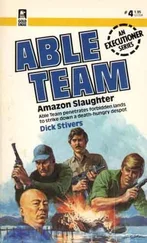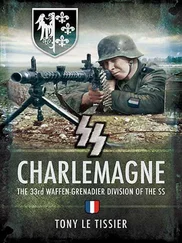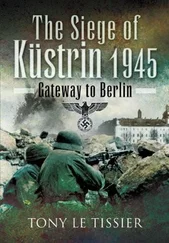Busse had enlisted in the German Army as a potential officer in December 1915 and ended the First World War as a substantive second lieutenant. His war service had obviously attracted official attention, for he had been awarded the Knight’s Cross with Swords of the Hohenzollern Order, the Kaiser’s equivalent of the British royal family’s Victorian Order. His subsequent service with the Reichswehr saw painfully slow progress with promotion to captain not achieved until 1933, but then came rapid acceleration to major in 1936, lieutenant-colonel in 1939 and full colonel in 1941, by which time he was on the General Staff. He then served as Chief of Staff to Army Groups Süd and Nordukraine on the Eastern Front, achieving the rank of major-general and then lieutenant-general in 1943, and being awarded the German Cross in Gold on 24 May 1942 and the Knight’s Cross on 30 January 1944. Busse had been given command of 122nd Infantry Division in July 1944, and then, on 1 August 1944, I Corps with Field Marshal Ferdinand Schörner’s Army Group Nord , which was trapped on the Courland peninsula and condemned to extinction by Hitler’s refusal to allow evacuation. He would therefore have been mightily relieved to have been flown out and then given command of the shattered 9th Army as a general of infantry on his own home ground around Frankfurt on 21 January 1945. [8] Bradley, Dermot, Karl-Friedrich Hildebrand & Markus Röverkamp: Die Generäle des Heeres 1921–45 .
The withdrawal of Busse’s troops from their eastern and southern fronts was relatively well protected by the geographical features, particularly the dense waterways of the Lower and Upper Spreewald areas, which formed an ‘L’ from Leibsch via Lübben to Cottbus. The Soviets were unable to follow closely enough to endanger the German troops. However, V Corps’ 342nd Infantry Division, fighting an isolated action in the Burg–Cottbus area, was overrun that afternoon. Meanwhile, V Corps headquarters, which had been made responsible for 9th Army’s southern flank on 22 April, reported having established a perimeter defence along the line Löpten–Teupitz–Halbe, south of which a regiment of 35th SS Police Division held the line down to Lübben with the Engineer Training Battalion beyond.
The Soviets were able to gain the south bank of the Spree near Fürstenwalde, and also to close up to the Oder–Spree Canal. The remains of the 561st SS Tank-Hunting Battalion held fast on the autobahn east of Fürstenwalde in the Biegen, Briesen and Kersdorf areas, enabling the Frankfurt Garrison and the remains of 286th Infantry Division and SS Regiment Falke to get through. The 712th Infantry Division was still holding out at Petershagen, the 169th at Alt Madlitz, and Battlegroup Nederland at Falkenberg. Elements of the Kurmark Division prevented Soviet penetration of the woods on either side of the Scharmützelsee. [9] Tieke, Das Ende zwischen Oder und Elbe , pp. 194–5.
It was different on the northern flank, where conditions had become worse since the withdrawal of LVI Panzer Corps into the capital. Despite constant counterattacks being mounted, not all the planned lines could be held. In some areas the hard-pressed divisions and battlegroups had to withdraw as much as ten or fifteen kilometres before they could hold.
A soldier of the 32nd SS Motorized Artillery Regiment, which had been covering the withdrawal from just north-east of Beeskow, described the situation:
The concerned expressions, but also the good wishes of the civilian population, gave us many problems. The civilian bush telegraph was faster than our marching speed. They knew that Ivan was only a few hundred metres behind us. We were often begged to take on the protection of a place, and civilian clothing was offered us. With very heavy hearts, we marched on with our unit. Many old soldiers watched us with tears in their eyes. [10] Stang/Arlt, Brandenburg im Jahr 1945 , p. 99.
That evening HQ 9th Army, which had already issued its orders for the withdrawal, received revised orders to: ‘…hold on to the largest possible area between the autobahns leading to Berlin from Frankfurt and Cottbus, and to cooperate with 12th Army’s attack from Treuenbrietzen to the north-east against the Soviets attacking Berlin from the south.’ [11] Busse, ‘Die letzte Schlacht der 9. Armee’, p. 167.
To do this would mean holding fast on the northern flank in the first case, something which was already beyond 9th Army’s ability. General Busse, whose staff had meanwhile moved from Bad Saarow to the Scharmützelsee railway station at the southern end of the lake, later wrote:
The traverse of a distance of 60 kilometres as the crow flies to the 12th Army, right through the rear communications area of 1st Ukrainian Front’s northern wing, would only have been possible providing the thrust was so rapid that the enemy were unable to mount effective countermeasures. The troops would have had to keep moving day and night. They could only have done this if the effectiveness of the strong Russian air and tank forces could possibly be reduced. The wide expanse of woodland from Halbe via Kummersdorf to north of Luckenwalde offered the only possibility for this. This became more apparent with 12th Army’s disappointing announcement that it was not attacking to the east, but to the north, towards Beelitz, so there was no longer any question of a thrust being made to meet us. Nevertheless, the High Command still ordered that 9th Army, following a successful break-out, was immediately to wheel and attack the rear of the enemy on the southern outskirts of Berlin. This order 9th Army neither heeded nor acknowledged.
We had to go about things in accordance with our intention to get as many troops away as possible from the Russians’ grasp. Our firm resolve was to breach the encirclement on either side of Halbe and break through to south of Beelitz using the cover of the woods. [12] Ibid .
The 21st Panzer Division was now deployed south from Karlshof, two kilometres north-west of the autobahn junction, with a series of strongpoints stretching to the west of Ragow and Mittenwalde down to Teupitz, and was heavily engaged all day. On its right, the land link to Berlin was reduced to a corridor barely four kilometres wide and already under artillery surveillance. Behind them in Königs Wusterhausen were the remains of the 32nd SS Volunteer Grenadier Division’s battlegroup, which had been forced out of Wernsdorf and Niederlehme on the Spree–Dahme line by Chuikov’s troops. [13] Kortenhaus, Der Einsatz der 21 . Panzer-Division , p. 134.
A field hospital in the town, many of whose citizens were already displaying white flags, came under repeated attack from Soviet aircraft. [14] Tieke, Das Ende zwischen Oder und Elbe , p. 190.
During the day elements of 128th Rifle Corps of the Soviet 28th Army continued to arrive to take part in the operation but one formation, 152nd Rifle Division, was caught up near Mittenwalde in what was thought to be a break-out attempt by 9th Army. Whatever the cause, 152nd Rifle Division was still fighting in the Mittenwalde area that night and does not appear to have rejoined its parent formation for another day or two. The two other corps of 28th Army, 3rd and 20th Guards Rifle Corps, were also heading north towards Berlin, but were diverted to assist with the encirclement of 9th Army. As an additional safeguard, 25th Tank Corps was moved into the area of Duben as a mobile reserve. [15] Koniev, Year of Victory , p. 135.
The 4th Guards Tank Army continued closing in on Potsdam and closing the gap with 1st Byelorussian Front’s 47th Army encircling Berlin from the north, but made no attempt to cross the line of the Havel, which seems to have been its operational boundary. The 6th Guards Mechanized Corps split off at Beelitz, wheeling west towards Brandenburg and Paretz (near Ketzin), taking Lehnin that day. [16] Ibid ., p. 135.
Читать дальше












